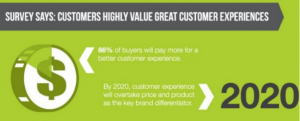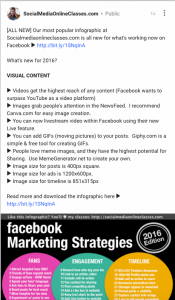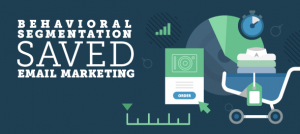
Even if email is the oldest marketing channel, it’s still the one generating the best ROI. It’s also consumers favorite channel to receive communications from brands they like. More than one out of two people think that 70% of emails received are not relevant though.
Companies have never collected as many data on their customers and prospects than today. So why aren’t they using it to send interesting and personalized emails? Well it’s not that easy. Today customers check their emails anywhere, at any time, when doing anything. Brands cannot control their recipients environment at the moment-of-open anymore.
Email intelligence
Email intelligence is a new concept which aims to eradicate mass mailing. The idea is to send the right message at the right time to each recipient. Emails become smarter and auto-adaptive to fit to each person. It takes into account all available data and all events that happened on other channels.
Each email sent by a brand should be unique and tailored to each recipient. This would improve not only user experience but also engagement. To do so, companies can leverage:
- Customer data: website, CRM, etc.
- External data: API, product feed, etc.
- Contextual data: device, location, etc.
It’s a brand new way for companies to use the email marketing channel.Email intelligence allows them to know where, when and how recipients open their emails. A clothing brand could then adapt its emails based on temperatures. It could display a short and a t-shirt if it’s hot at the moment-of-open, and a sweater and trousers if it’s cold when opening the email.
We recently talked about omni-channel. Now let’s see how companies can use email intelligence in an omni-channel strategy. And how it would provide customers with a better and smoother experience.
Email + CRM
Most e-commerce sites send emails when one’s abandoned his cart. If this automated email is sent one hour after the abandonment, and the customer has bought the product on another channel in the meantime, the email is not relevant anymore.
Email intelligence will detect the sale happened on another channel and adapt the email in real-time. The cart abandonment message will then be replaced by tips on how to use the product, or complementary products.
Email + location
As explained in our last post, the goal of omni-channel is to tighten the gap between online and offline. To generate traffic in-store, brands have several options. “Click-and-collect” allows customers to order online and have a delivery in-store. “E-booking” empowers them to book products online and come in a store to try them on before buying them.
Some brands provide their customers with maps on their websites so they can find the closest shop. Email intelligence can go further. Brands can insert a live map directly into their emails. The map will be updated based on each opener’s location to always show the nearest store.
Email + location + device
Two channels are often used simultaneously by customers to decide whether to buy a product or not. Actually 76% of online customers used their mobile in-store in 2015. One’s might use his phone in a shop to check a product’s customer reviews for example.
Email intelligence detects each opener’s device and location to adapt the email in real-time. If someone opens an email on mobile when one’s is close to a shop, it will display a barcode to scan in-store. If someone else opens this email on desktop near a shop, it will then promote “click and collect” in this store.
Email + location + product feed + moment of the day
Email intelligence tightens the gap between online and offline. Product feed data can also be leveraged. It allows companies to display the closest store stocks directly into the email. To do so, location data at the moment-of-open are collected to identify the closest shop. Then these data are used to get the right product feed and update stocks in real-time in the email.
Moment of the day is another factor that can be explored thanks to email intelligence. An email could display a map and stocks of the nearest store only if the email is opened during the shop opening times. Email intelligence connects all channels. It allows brands to always display the most relevant content for each person.
Email + location + product feed + weather conditions + CRM + API
Email’s content can also be adapted to weather conditions and temperatures. Let’s take the example of a shoe brand. It could send an email showing a selection of sandals if it’s sunny for an opener. And the email would show boots if it’s raining when another recipient opens this email.
This selection would depend on stock availability in the nearest store at the moment-of-open. If a shoe displayed in the email is out-of-stock in the closest shop, it would be replaced by another shoe in stock. Here, email intelligence pulls product feed data right into the brand’s emails.
Email intelligence can also leverage APIs to collect discounts data. So it updates prices directly into the email for the shoes selection. At each open of the email, location is detected first to identify the closest shop. Then product feed data is collected to display products in stock in this store. Eventually, API is used to update the discounted prices for the shoes available in this shop.
Email intelligence leverages all available data (contextual, external, customer data, etc.). So brands can always display the most relevant and up-to-date content to each recipient. Email is actually shifting from a communication to a sales tool.
Originally published on Medium
Digital & Social Articles on Business 2 Community(61)








